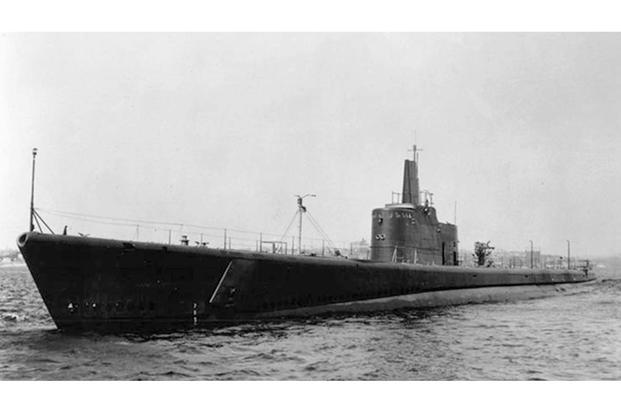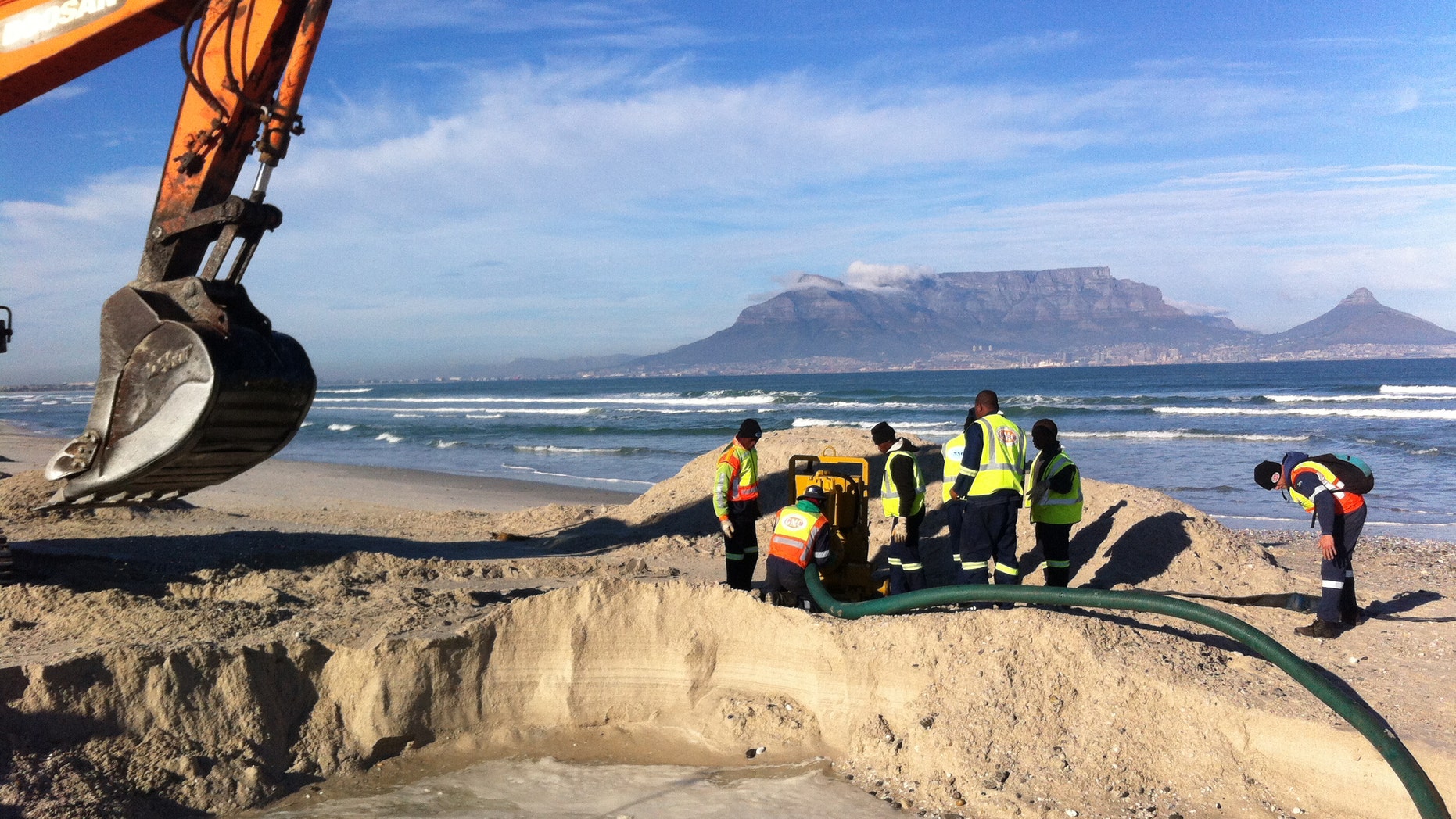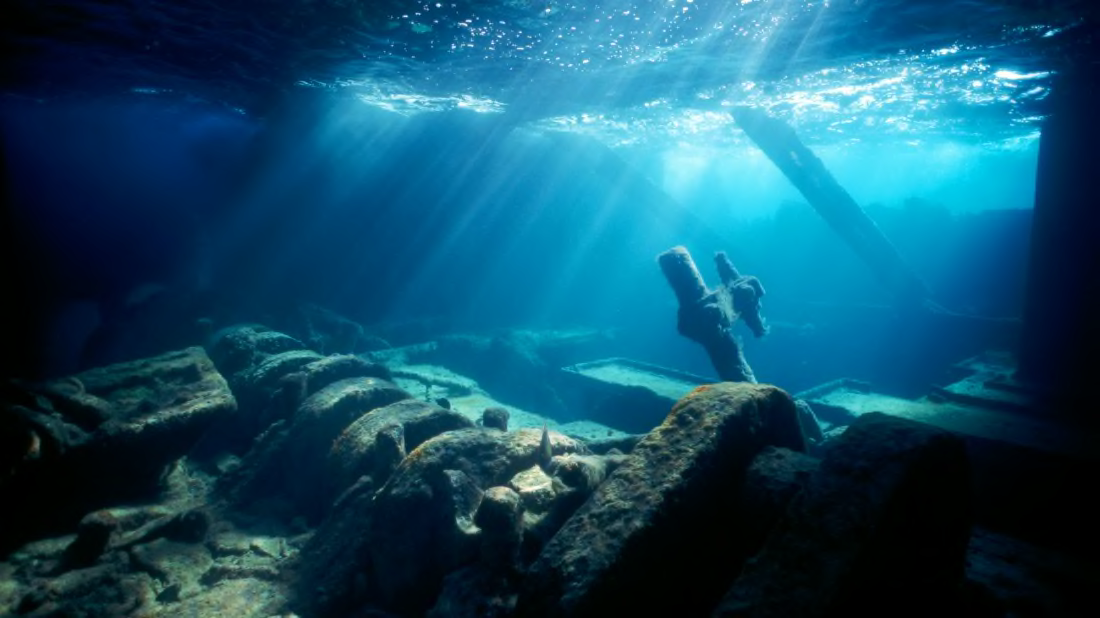HOT NEWS !
Stay informed on the old and most recent significant or spectacular
nautical news and shipwreck discoveries

-
Bow of WWII US Submarine Discovered
- On 21/08/2019
- In World War Wrecks
- 0 comments

By James Rogers - Military.com
The bow of the World War II submarine USS Grunion has been discovered 77 years after the sub went missing off the remote Aleutian Islands in Alaska on her first war patrol.The Gato-class submarine (SS 216) was sent to the islands in June 1942, according to the Lost 52 Project, which locates lost U.S. World War II submarines. Operating off the island of Kiska with a crew of 70 sailors, the Grunion sank two Japanese patrol boats before being ordered back to base in Dutch Harbor on Amaknak Island on July 30.
But the submarine, which reported heavy antisubmarine activity during its final transmission, was never heard from again. Declared overdue from patrol, the Grunion was assumed lost with all hands on Oct. 5, 1942.
Almost 80 years later, the bow was discovered in 2,713 feet of water near Kiska by underwater drones and sophisticated photogrammetry imaging. The discovery completes another piece in the puzzle of the Grunion's fate.
The main wreckage of the sub was found in August 2007, thanks to the efforts of John, Bruce and Brad Abele, sons of the Grunion's captain, Mannert Abele. The wreck was verified by the U.S. Navy in October 2008.
The latest discovery was made a short distance from the main wreck, with researchers noting that the bow is resting on a volcanic slope on the seabed.
-
Historic 17th-century Dutch shipwreck discovered
- On 21/08/2019
- In Underwater Archeology
- 0 comments

By James Rogers - Fox News
Archaeologists in South Africa have found the long-lost wreck of a Dutch merchant ship that played a crucial role in the country’s colonial history. The Dutch East India Company vessel “Haarlem” or “Nieuw Haarlem,” wrecked in Table Bay on the evening of March 25, 1647.The African Institute for Marine and Underwater Research Exploration and Education (AIMURE) explains that, while 58 people traveling on the ship were taken back to Europe by other merchant vessels, 62 were left behind to salvage as much of the ship’s cargo as possible.
The salvagers built a makeshift camp dubbed “Fort Zandenburch,” which they lived in for about a year after the shipwreck. They also came into contact with local indigenous people.
When they returned to the Dutch Republic, the management of the Dutch East India Company decided to establish a “stopover for ships” at the location where they founded their camp. Informally known as the “Tavern of the Seas,” this eventually became the modern city of Cape Town.
-
Robert F. Marx Passes Away Peacefully at Age 82
- On 23/07/2019
- In Miscellaneous
- 0 comments

From Space Coast Daily
Robert F. Marx of Indialantic, Florida, passed away peacefully at the age of 82 on the Fourth of July 2019 surrounded by his devoted wife and daughters.Bob was born on December 8, 1936, in Pittsburgh Pennsylvania. Leaving home at an early age, he embarked on a life of adventure that took him around the world and under the sea.
A pioneer SCUBA diver, Bob was internationally known for his achievements in marine archaeology and maritime history.
Besides being a mentor to many and a famous raconteur, Bob is best known for the archaeological excavation of the sunken city of Port Royal for the government of Jamaica as well as the discovery of the 1656 Spanish galleon Nuestra Señora de las Maravillas shipwrecked off Grand Bahama Island.
His expedition was featured in a network television documentary Treasure Galleon narrated by Rod Serling.
A proud United States Marine, Bob was a Staff Sargent and the Director of the USMC Diving School, Vieques, Puerto Rico in the 1950s and a Korean War combat veteran.
-
Dutch World War II shipwrecks
- On 13/07/2019
- In World War Wrecks
- 0 comments

By Jake Rossen - Mentalfloss
For nearly 80 years, two Dutch submarines have been occupying the ocean floor off the coast of Malaysia, with the remains of their crews still inside. They were among dozens of shipwrecks in the same area, all of them casualties of underwater World War II battles.Now, the ships— known as HNLMS O 16 and HNLMS K VII—are gone.
There’s nothing paranormal at work, though. Instead, the ships have vanished as a result of greed. Scavengers in the area have made a profitable pursuit of placing explosives within the wrecks, blowing them into manageable pieces and taking off with the scrap metal using a crane.
Copper and bronze materials can also be resold. It’s estimated that about 40 ships in Indonesia, Singapore, and Malaysia have been demolished as a result of such efforts in recent years.
Because the ships are typically considered unmarked graves, the thieves may be committing the crime of desecrating corpses. After several British ships were found ransacked, the UK’s Ministry of Defense urged Indonesia to increase their efforts to protect the ships.
The United States has dispatched representatives in Indonesia to guard ships they believe have been targeted by the scavengers.
-
National marine sanctuary
- On 09/07/2019
- In Parks & Protected Sites
- 0 comments

By Allen Kim - CNN
The National Oceanic and Atmospheric Administration has designated the first new national marine sanctuary since 2000.Forty miles south of Washington, the 18-square-mile stretch of the Potomac River in Charles County, Maryland, has been named the Mallows Bay-Potomac River National Marine Sanctuary.
It was nominated in 2014 in order to protect World War I-era steamships and vessels, historic shipwrecks dating to the Civil War and archaeological artifacts from nearly 12,000 years ago that have become part of the environment.
"The designation of Mallows Bay as a national marine sanctuary is an exciting milestone for NOAA and an opportunity for the public to celebrate and help protect this piece of our nation's rich maritime history," Acting Administrator Neil Jacobs said in a statement Monday.
"We look forward to working with the state of Maryland, Charles County and other local partners to foster education and research partnerships as well as support and enhance local recreation and tourism along this historic stretch of the Potomac River."
-
‘Undisturbed’ ancient Roman shipwreck found
- On 29/06/2019
- In Underwater Archeology
- 0 comments

By Stephanie Valera - Geek.com
Archaeologists have discovered an ancient, Roman-era wooden ship, complete with cargo, off the eastern coast of Cyprus.In a statement, Cyprus’ Department of Antiquities said the wreck is the “first undisturbed Roman shipwreck” found in the Mediterranean island nation’s waters. The ship belongs to the period after Rome annexed the island in 58 BC.
Amphorae found in and around the wreck identify the ship as a merchant vessel that transported cargo between Syria and the southern coast of modern Turkey, known in ancient times as Cicilia.
The wreck was found near the resort town of Protaras by volunteer divers with the University of Cyprus’ underwater archaeological research team.
A team from the university’s Maritime Archaeological Research Laboratory (MARELab) was also at the site to document the ship and protect it from looters while archaeologists prepare to conduct a preliminary investigation.
Aside from being the first undisturbed Roman shipwreck ever found in Cyprus, the find marks a milestone as the expedition was the first underwater project to be fully financed by the Cyprus government.
-
2400-year-old ‘Odysseus’ Greek shipwreck from Black Sea
- On 14/06/2019
- In Underwater Archeology
- 0 comments

By Michael Wing - Epoch Times
The ancient Greeks once sailed the seas aboard ships like the ones depicted on ancient murals and vases from the time of Plato. In modern times, though, we have never actually laid eyes on one—that is, until now.In the depths of the Black Sea, more than 80 kilometers off the coast of Burgas, Bulgaria, an ancient Greek merchant ship, resembling paintings of the vessel used by Homer’s Odysseus, was discovered by an Anglo-Bulgarian research team in October 2018.
From carbon dating, the ship is thought to be over 2,400 years old, making it the world’s oldest ship ever found that is still intact.
The vessel measures 23 meters long (75 feet), and its rudder, rowing benches, as well as the contents of its cargo hold remain preserved despite being two-dozen centuries old.
The Black Sea Maritime Archaeology Project (MAP) team located the ship at a depth of 2,000 meters below the surface (well beyond the reach of modern divers) using two underwater robotic explorers to digitally map the wreck in 3D.
They also took samples for carbon dating. “It’s when the ROV [remote operated vehicle] drops down through the water column and you see this ship appear in the light at the bottom so perfectly preserved it feels like you step back in time,” MAP researcher Dr. Helen Farr told BBC.
-
Man accused of hiding treasures from shipwreck
- On 14/06/2019
- In Illegal Recoveries
- 0 comments

By Yonhap - Korea Herald
A man in his 60s has been arrested on suspicion of possessing ancient pottery that is believed to have been taken illegally from an underwater resting place off the southwestern coast of South Korea, police said Thursday.The 63-year-old suspect, whose name was withheld, is accused of having hidden ancient Chinese celadon and other treasures retrieved in the 1980s from the Sinan underwater relics burial site in waters off South Jeolla Province in violation of the Act on Protection and Inspection of Buried Cultural Heritage, police said.
The man is also suspected of having attempted to smuggle some of the treasures into Japan for sale, according to the Daejeon Metropolitan Police Agency.
Police detained the suspect March 20 and seized 57 ceramic objects from his home in Seoul and other places.
The police and the Cultural Heritage Administration launched a joint investigation last February after obtaining intelligence indicating that the suspect was trying to sell stolen treasures in Japan.